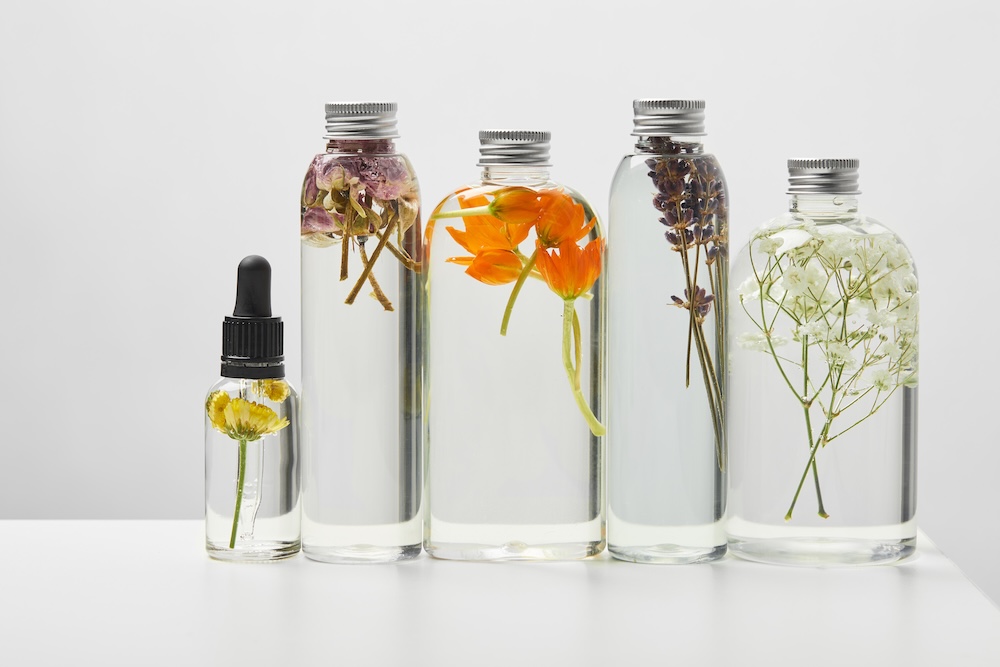Botanical oils offer time-tested benefits—from skin renewal and hair strength to mood-boosting aromatherapy. When responsibly sourced and used thoughtfully, they become versatile tools in a sustainable wellness routine. This guide will help you understand popular plant oils, their eco-conscious applications, and how to choose and use them mindfully.
Why Botanical Oils Matter
Nutrient-Rich & Gentle
Plant oils are packed with fatty acids, antioxidants, and vitamins that nourish skin and hair without synthetic additives.
Earth-Friendly Alternatives
They’re biodegradable, often biodegradable, and—when certified organic or sustainably wild-harvested—showcase transparent supply chains.
Multi-Purpose & Minimal-Waste
One bottle can serve many functions: moisturiser, hair mask, massage oil, clean makeup remover, and more—reducing clutter and plastic waste.
Holistic Connection
Natural rituals with oils foster deeper mind-body harmony, promoting mindfulness and self-care.
Top Botanical Oils & Their Uses
1. Rosehip Seed Oil
Enriched with vitamin A (retinoic acid), vitamin C, essential fatty acids
Benefits: Supports cell regeneration, fades scars, evens tone
Use: Two drops night serum, or mixed with clay for a repair mask
Sustainable tip: Seek organic, cold-pressed oils to preserve nutrients and minimize waste
2. Jojoba Oil
Technically a liquid wax, closely matches skin’s natural sebum
Benefits: Balances oil production, non-comedogenic, great for acne-prone skin and scalp
Use: Morning moisturizer, eye-lash serum, or scalp massage oil
Sustainable tip: Choose fair-trade and cruelty-free brands
3. Tamanu Oil
Rich in fatty acids and calophyllolide (anti-inflammatory)
Benefits: Heals scars, soothes irritated skin, supports wound repair
Use: Spot-treat eczema, psoriasis, or sunburn with pure drops
Sustainable tip: Harvested from forest trees in the Pacific; check for ethical wild-harvest sourcing
4. Argan Oil
High in vitamin E and essential fatty acids
Benefits: Strengthens hair, softens skin, antioxidant-rich
Use: Hair serum, cuticle oil, dry-skin moisturizer
Sustainable tip: Look for fair-trade Moroccan cooperatives that support local communities
5. Calendula-Infused Oil
Calendula petals in neutral carrier oil like olive or sunflower
Benefits: Anti-inflammatory, soothing for eczema, diaper rash, chapped skin
Use: Healing balm, after-sun oil, baby-care oil
Sustainable tip: Use petals from your garden or choose biodynamic partners
6. Sesame Oil
High smoke point and rich in antioxidants (sesamol)
Benefits: Ideal for oil pull, massage, scalp nourishment
Use: Warm scalp rub, oil cleanse, or Ayurvedic mouthwash
Sustainable tip: First-pressed, cold-processed oils are higher quality and less processed
7. Sweet Almond Oil
Mild and hypoallergenic with vitamins E and B
Benefits: Gentle moisturizer for sensitive skin, stretch mark prevention
Use: Baby oil, makeup remover, or carrier for essential oils
Sustainable tip: Look for unrefined almond oil from dry-farmed orchards
8. Coconut Oil
Saturated fat-rich, antimicrobial lauric acid
Benefits: Conditioning mask, balm, oil cleansing
Use: Hair mask, lip balm, or cuticle softener
Tip: Use in moderation—avoid overuse if skin is prone to clogged pores
Creating a Sustainable Beauty Kit
Choose multi-use oils to simplify your routine and reduce product waste
Use amber or cobalt-glass bottles with droppers for UV protection and reuse
Source from transparent brands using responsibly harvested raw materials
Buy small quantities to preserve freshness, store oils in cool, dark places
Daily Rituals With Botanical Oils
Morning Glow
Cleanse, tone with aloe or green-tea mist, then apply jojoba oil + sunscreen
Midday Refresh
Spritz with floral hydrosols (rose, chamomile) and use a few drops of rosehip on dry patches
Evening Restorative
Double-cleanse, use tamanu oil as a spot treatment, moisturize with rosehip or argan oil
Weekly Ritual
Steam with lavender or rosemary, apply clay mask with argan or sweet almond oil, follow with light oil serum
Scalp Care
Massage sesame or argan oil into the scalp once a week for circulation and healthy hair growth
Eco-Friendly Tips for Using Botanical Oils
Patch-test oils before full use—skin sensitivities vary
Label jars by date—most oils are good for 6–12 months
Opt for organic & wild-harvested oils certified for purity
Recycle or upcycle bottles—use as travel vials or household tincture containers
FAQs About Botanical Oils
Can I mix oils together?
Absolutely. Create custom blends—use jojoba base with a few drops of tamanu or rosehip.
Can babies use botanical oils?
Yes—with caution. Use gentle oils like sweet almond or calendula-infused olive oil. Avoid essential oil blends directly.
Will natural oils irritate my skin?
Some might. Always patch-test and start with a small amount, especially for tamanu or argan oil.
Are all cold-pressed oils better?
Generally yes—cold pressing preserves nutrients and reduces manufacturing impact.
Is it okay to ingest some oils?
Food-grade oils like sesame or sweet almond can be used in cooking or oral care, but check for edible certification.
Final Thoughts: Plant-Powered Wellness
Botanical oils are more than skincare—they’re expressions of intentional living. From rosehip’s regenerative powers to tamanu’s healing touch, each bottle supports both personal care and planetary health.
By choosing responsibly sourced oils, embracing multi-functional routines, and caring for packaging sustainably, you build a beauty ritual rooted in natural wisdom and eco-awareness.









Reader Interactions